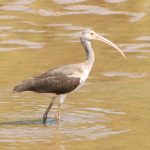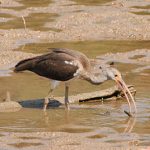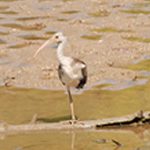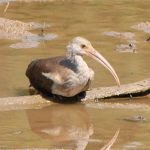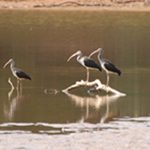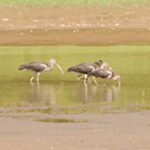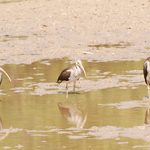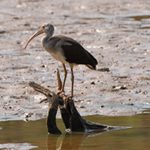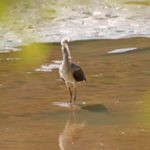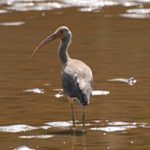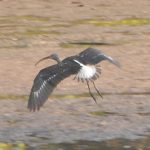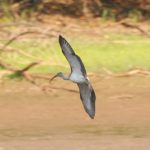White Ibis
Eudocimus Albus
American White Ibis (Eudocimus albus) is a species of wading bird of the ibis family Threskiornithidae which occurs from the mid-Atlantic coast of the United States south through most of the New World tropics.
It occurs in marshy wetlands and pools near the coast. It also occurs on mowed grass and has become common in some city parks. It builds a stick nest in trees, bushes, or over water, and 2 to 5 eggs are typically laid. White ibises are monogamous and colonial, usually nesting in mixed colonies with other wading species.
This ibis feeds by probing with its long, downcurved beak. Its diet consists of various fish, frogs, and other water creatures, as well as insects.
The coloration of a juvenile American White Ibis. Adults are 65 cm long with a 95 cm wingspan. They have all-white plumage except for black wingtips (visible in flight) and reddish bills and legs. The red bill blends into the face of breeding birds; non-breeding birds show a pink to red face. Juveniles are largely brown with duller bare parts; they are distinguished from the Glossy and White-faced Ibises by white underparts and rumps.
Like the other species of ibis, the White Ibis flies with neck and legs outstretched, often in long, loose lines.
The song of the male is an advertising hunk-hunk-hunk-hunk. The female squeals. When feeding, the birds often give a soft, grunting croo, croo, croo as they forage.
This bird hybridizes with the Scarlet Ibis, and they are sometimes considered conspecific.
The text within the green border is licensed under the GNU Free Documentation License. To see the full article with more information, visit the Wikipedia article “American White Ibis“. All content outside the green border is copyrighted by McBryde Website Design.
For more information from the USGS (United States Geological Survey)
on the White Ibis, click here.

